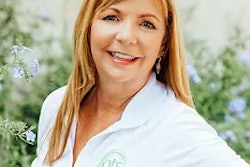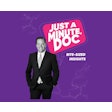
A successful dental practice is based on outstanding systems that are repeatable day after day. The best systems create the best practices. But sometimes these systems falter. You want to be aware when your practice starts to decline in any area, and the way to do that is by tracking the right key performance indicators (or KPIs), which quickly indicate an area that requires strengthening.
There's been a great deal written lately in the self-help literature on making 1% improvements in your life. Part of the reason could be that it sounds easy (which sells books.) The truth is that while small improvements may help some circumstances, in many cases, 1% is simply not good enough.
One of the major keys to success in dental practice is to know your numbers. That is the starting point of information about the practice and the areas that should be addressed as either strengths, weaknesses, opportunities, or threats. If you have a set of numbers that you analyze, you will be able to quickly identify when something is not within the right range. KPIs can include the following:
- Production
- Production per day
- Production year to date
- Production per hour
- Production per provider
- Overhead
- Profit
- No-shows
- Open chair time
- Hygiene production
- Staff labor expense
- Etc.
There are 25 KPIs that Levin Group recommends practices track on a monthly and/or annual basis. By studying these numbers, the practice will know exactly how it is performing and what needs to be done next. Just as important, you will know when any area is falling off and can course-correct quickly before a significant challenge occurs.
Once you establish your KPIs, you’ll begin to realize that 1% improvement in most areas is not good enough. The right way to approach this is to set a target for each of your KPIs. For example, how much do you want production to increase in the next 12 months? Break that down into a daily production goal and measure it. Now you have a target that you are shooting for and can measure against.
If you find over time that you are missing most of your daily production goals, you will inevitably end up below the annual production goal target you have set. Establishing these goals will allow you to calculate precisely what percentage growth is required.
Rarely, will you set the target for growth at 1%, because it does not keep up with inflation. It is usually not challenging enough and a 1% increase in a practice with increasing overhead due to inflation results in lower doctor income. Another example would be no-shows. You might not know your current no-show percentage, but it is most likely somewhere between 4% and 6%.
If your no-show percentage is 6% you will lose somewhere between $3 million and $5 million over your career. Reducing a 6% no-show rate (which includes last-minute cancellations) by 1% is better than nothing, but not much.
You want to set a target for no-shows of 2% and bring that current 6% no-show percentage down to that level. There’s an enormous difference between reducing no-shows by 1% and reducing them by 4% when it comes to the impact of no-shows on production.
One more example would be hygiene productivity. Dental hygienist compensation has increased significantly since the pandemic. It will never be reversed and represents a new bar for wages and total compensation. The reaction by a practice therefore should be increased production and productivity by hygienists while maintaining an excellent culture and workflow pace. To accomplish this, changes need to be made.
Identify the current hygiene production number and then set a target of increasing it by 10%, 15%, or even 20%, which is not particularly difficult. Hygienists can catch up on all x-rays and fluoride on all patients within the next 12 months. They can contact overdue patients when they have downtime, which results in a far better scheduling rate than when the front desk calls overdue patients. They can identify elective procedures, like cosmetics and implants, the potential treatment that needs to be performed, as well as diagnosing periodontal disease. A 1% increase in hygiene productivity, using this example, will not result in a great benefit to the practice.
Summary
We read and hear a lot about 1% improvements today. It is a great theme for self-improvement, but it is a flawed idea when applied to dental practice production. In dentistry, a 1% improvement is rarely all that beneficial.
A 1% improvement in production, daily production, hygiene productivity, case acceptance, etc., is not meaningful enough to significantly affect practice performance. The right way to approach improving your practice’s numbers is to know your KPIs, set significantly higher targets for improvement, and then design systems and actions to achieve those targets.
Dr. Roger P. Levin is CEO of Levin Group, a leading practice management and marketing consulting firm. To contact him or to join the 40,000 dental professionals who receive his Practice Production Tip of the Day, visit LevinGroup.com or email [email protected].
The comments and observations expressed herein do not necessarily reflect the opinions of DrBicuspid.com, nor should they be construed as an endorsement or admonishment of any particular idea, vendor, or organization.



















